Churches 🢔 Religious architecture 🢔 Architectural wonders 🢔 Categories of wonders
Wonder
Gdansk St Mary’s Church
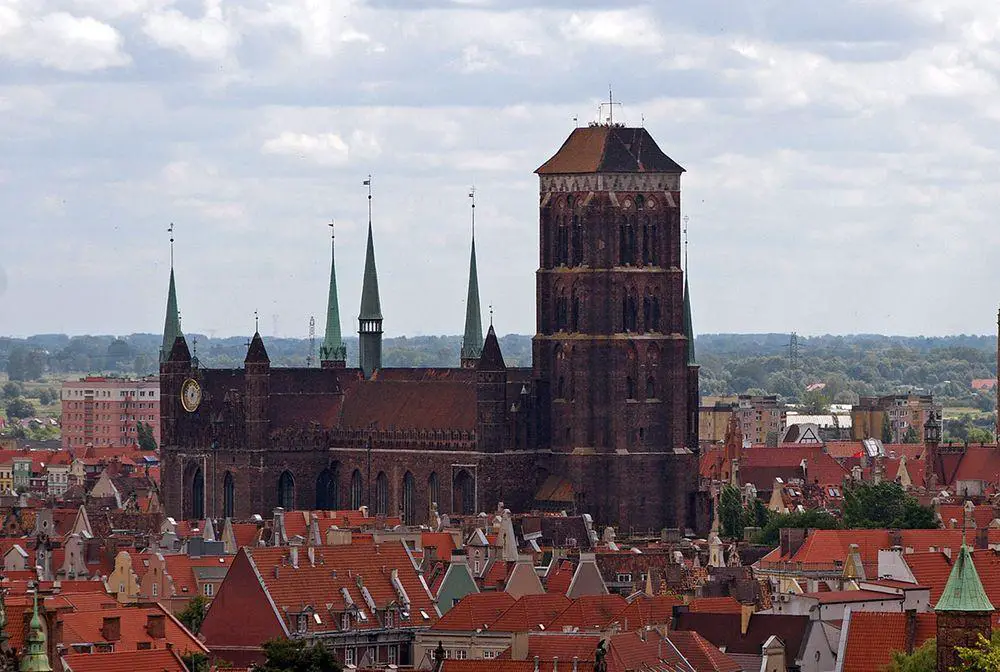
 In short
In short
For several long centuries the largest Lutheran church in the world was Gdansk St Mary’s Church – an enormous structure built from brick in Gothic style.
This is the third largest brick church in the world after San Petronio Basilica in Bologna, Italy and Munich Frauenkirche in Germany.
 46.8%
46.8%
GPS coordinates
Full name
Name in Polish
Architectural style
Year of construction
Branch of Christianity
Height
Map of the site
If you see this after your page is loaded completely, leafletJS files are missing.
 In detail
In detail
History
Early history
The church is located in the historical center of Gdańsk – an old port city that started to develop around the late 10th century.
Christianity was introduced here around the same time. It is not known when the first church was built in the site of present-day St. Mary’s Church, but around 1243 here most likely was a wooden church.
The first brick church was built here in 1343 – 1360: fairly large for its time but considerably smaller than the present one.

Construction
In 1379 there was started the construction of the present church. Design and works were led by local craftsman Heinrich Ungeradin. The architecture of the church most likely was inspired by the St. Mary’s Church in Lübeck – the first great example of the Brick Gothic style. Such great churches devoted to St.Mary were built in numerous cities – members of the Hanseatic league.
Construction works of the enormous church continued for a long time until the 1502.
Lutheran church
After several upheavals in the city in 1525 – 1526 the Lutheran Christianity became the leading branch in religion in the city. Initially, in 1536 – 1572 St. Mary’s Church was used both for Roman Catholic and Lutheran services. Since 1572 for four centuries it was a Lutheran church – the largest Lutheran church in the world.
Interesting finds were made here in the 19th and 20th when in the church were found rich collections of medieval art: ornamented garments, altar cloths, paintings, and other items.
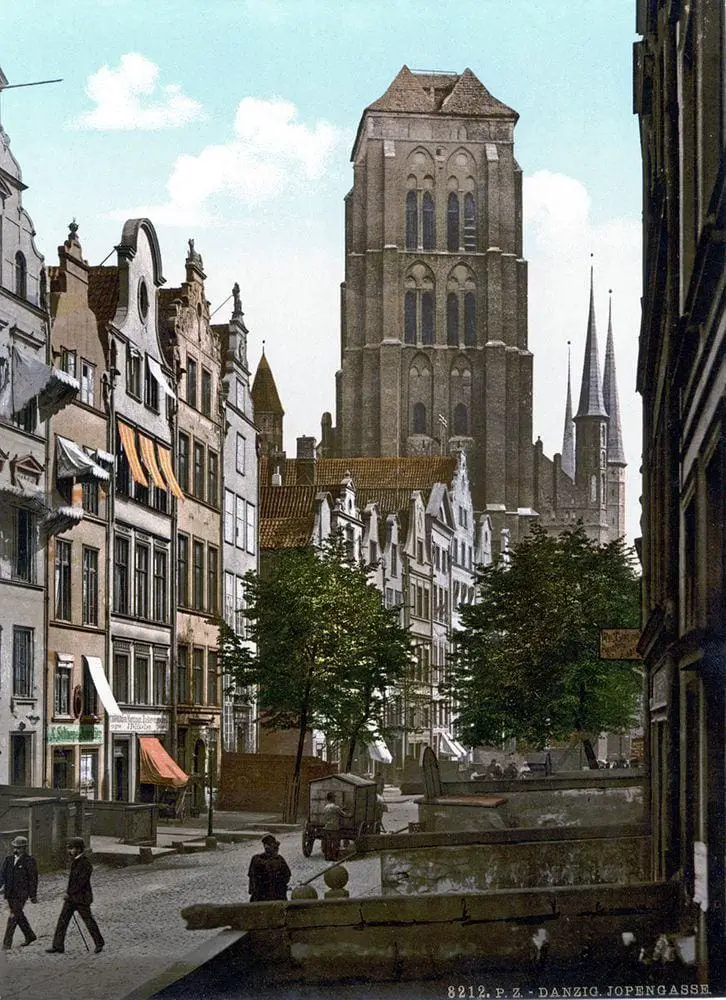
Second World War and after
The church was heavily damaged at the end of World War II, in March 1945 as the city was stormed by the Red Army. The church was burned down and many vaults collapsed, floor of the church was demolished by Soviet soldiers pillaging the corpses in the basement. Happily many, some 60% of the artworks were preserved because many items were evacuated and hidden in the nearby villages around the city.
Local Germans were expelled from the city starting from March 1945. The city was almost empty but some years later it was repopulated again – now by Poles.
The church was transferred to a Catholic diocese and in 1946 the reconstruction of the church was started. In 1955 the main works were completed but further renovations of the interior are ongoing up to this day.
Description of Gdansk St Mary’s Church
The church is 105.5 m long and its nave is 66 m wide and up to 29 m high. There is enough room for 25,000 people inside.
The tower of the church is 82 m tall and dominates the skyline of the old city.
This is hall church: an enormous structure where the nave and side aisles have similar height and width, forming an enormous hall. Such planning is characteristic of the Late Gothic. The hall is crossed by transept.
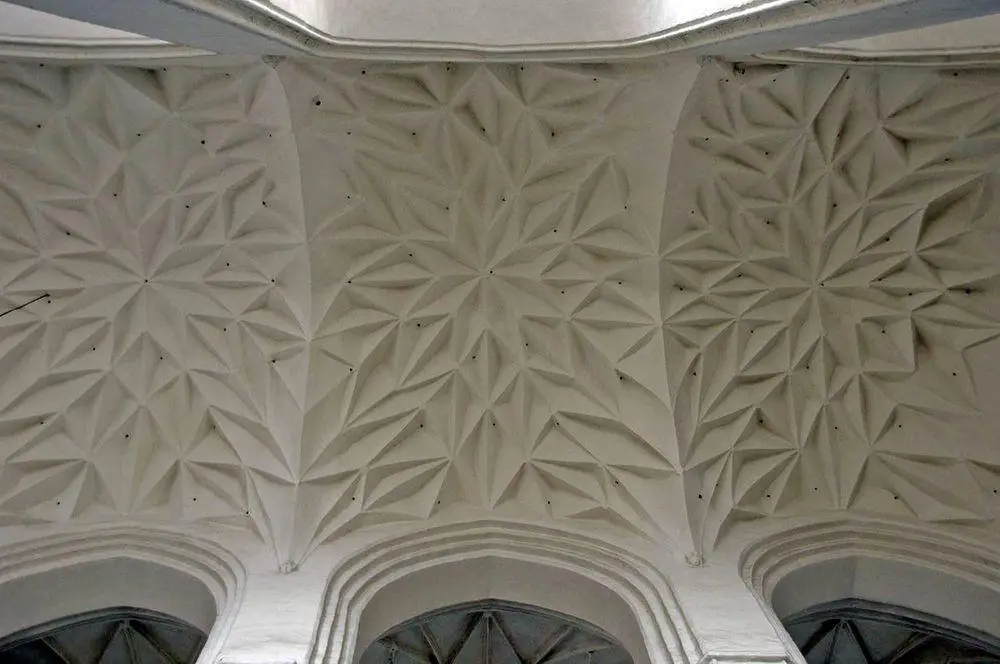
From the outside the church has not have too many embellishments – walls for the most part are plain, and the windows are narrow, arched. The roof is covered with ceramic tiles.
Vaults of the church are very impressive and very sophisticated. Nave has net vaults but side aisles – crystal vaults – some of the best worldwide.
The organ in the church was built in 1625 and rebuilt in 1985.
Many artworks of this church are seen in various museums around Poland and abroad but part of the paintings and other art values have been returned.
 Linked articles
Linked articles
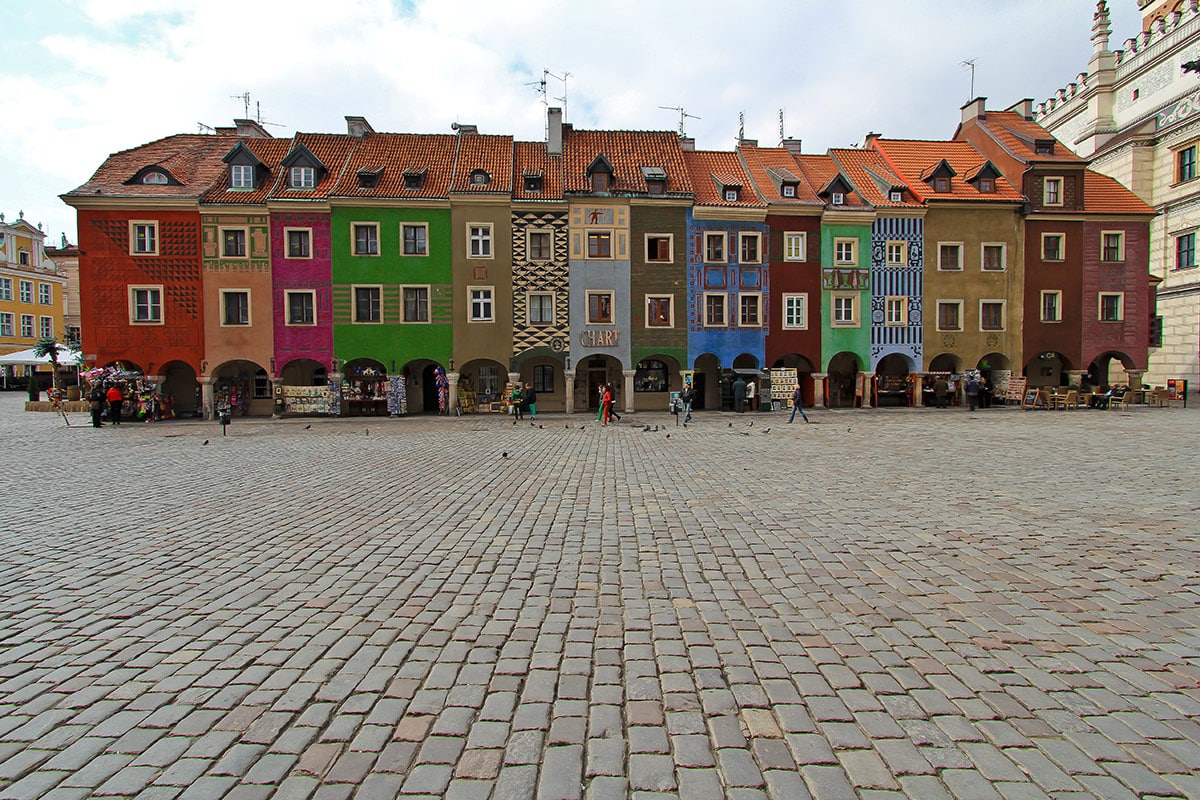
Wonders of Poland
The treasure of Poland is its architectonic heritage. In spite of terrible wars Poles have persisted and Poland together with its heritage has been reborn as a phoenix rising from the ashes. Most guests would be amazed to learn how many beautiful historical buildings are exact replicas, which were rebuilt in times when life in Poland was not that easy.
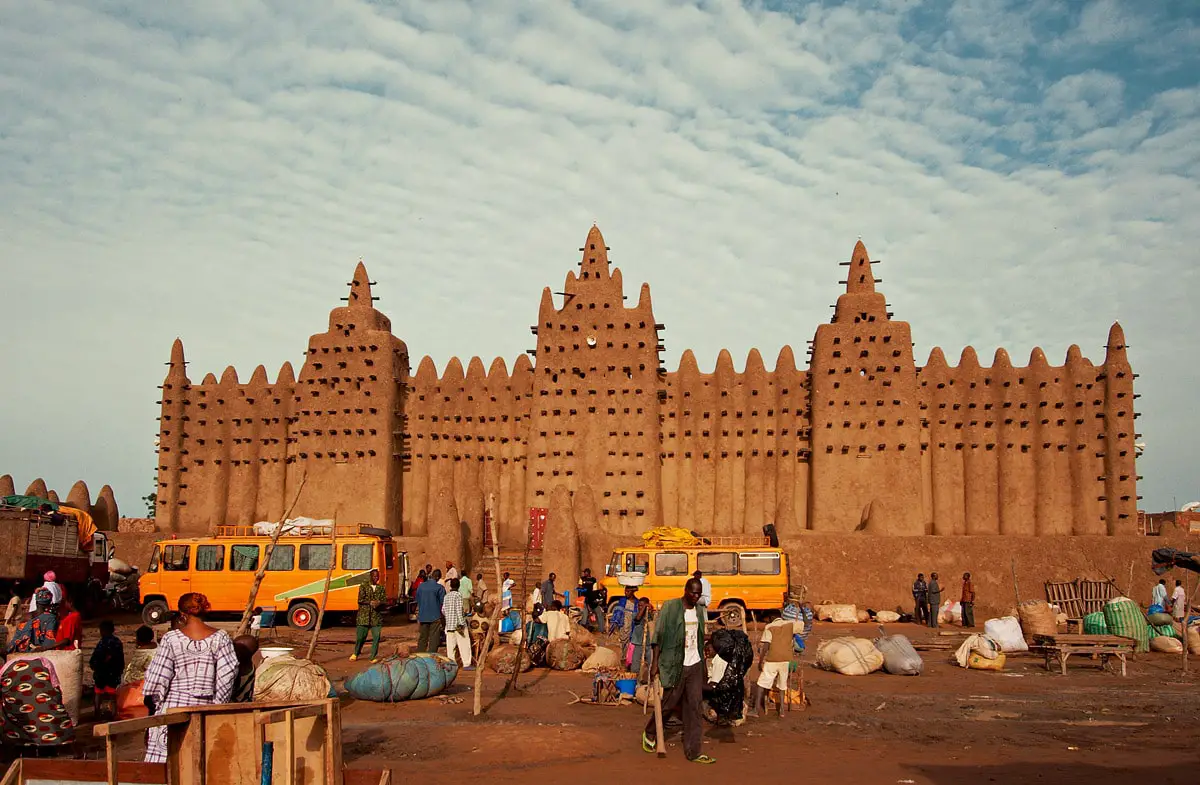
Religious architecture
Since ancient times human talents and skills have been expressed in religious architecture and arts, and traditions and rituals have evolved around pilgrimage sites. Religious buildings represent a major part of the highest achievements in architecture and crafts.
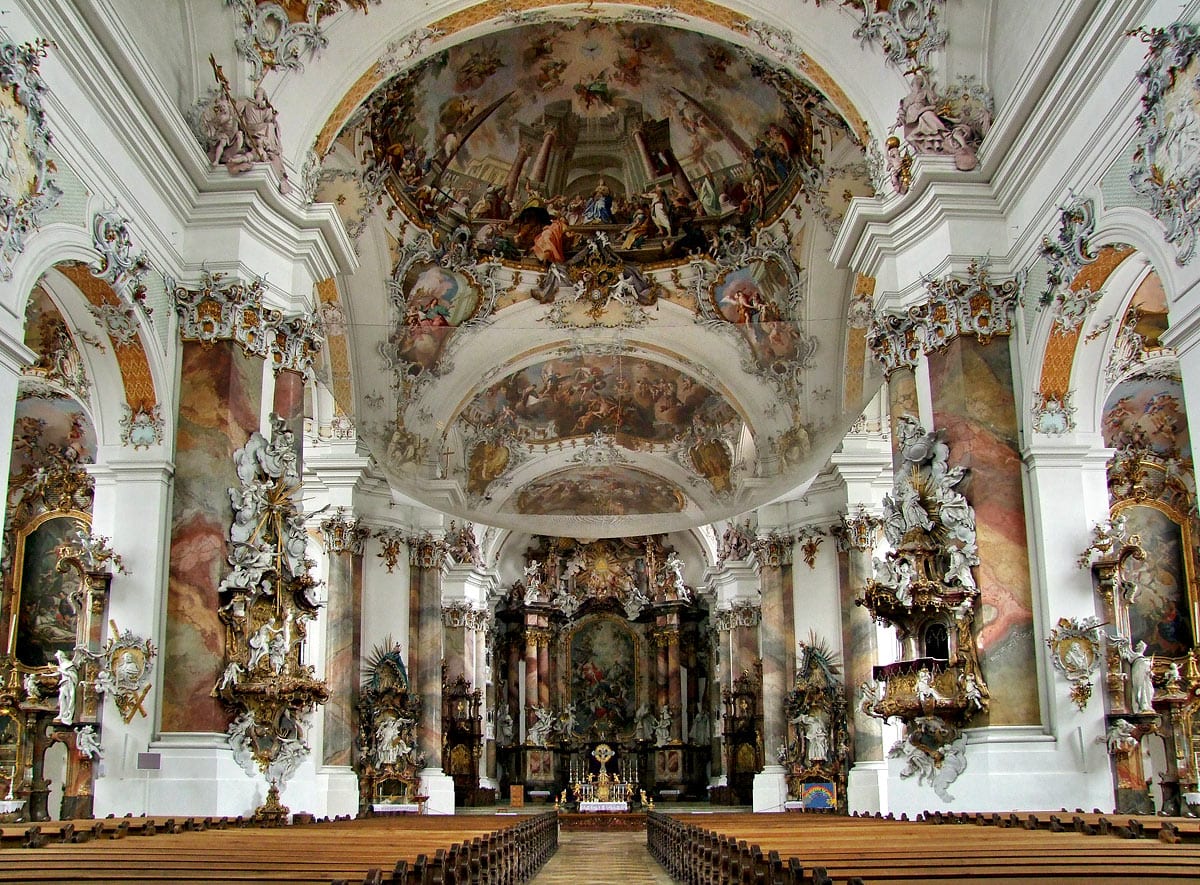
Churches
Throughout the millennia Christian churches have been the epitome of architecture and arts achievements in Western culture.
 Recommended books
Recommended books
Lonely Planet Poland
Lonely Planet Poland is your passport to the most relevant, up-to-date advice on what to see and skip, and what hidden discoveries await you. Experience Krakow’s scintillating nightlife, admire the elegance of Warsaw’s ‘Palace on the Water’, or explore the amber stalls along the crooked medieval lanes of Gdansk; all with your trusted travel companion.
DK Eyewitness Travel Guide: Poland
DK Eyewitness Travel Guide: Poland is your in-depth guide to the very best of Poland. Whether exploring the liveliness of its big cities or taking in the natural beauty of its idyllic lakes, beaches, and mountains, you will experience the culture of Eastern hospitality and community values of this land that is deeply rooted in tradition and history.


